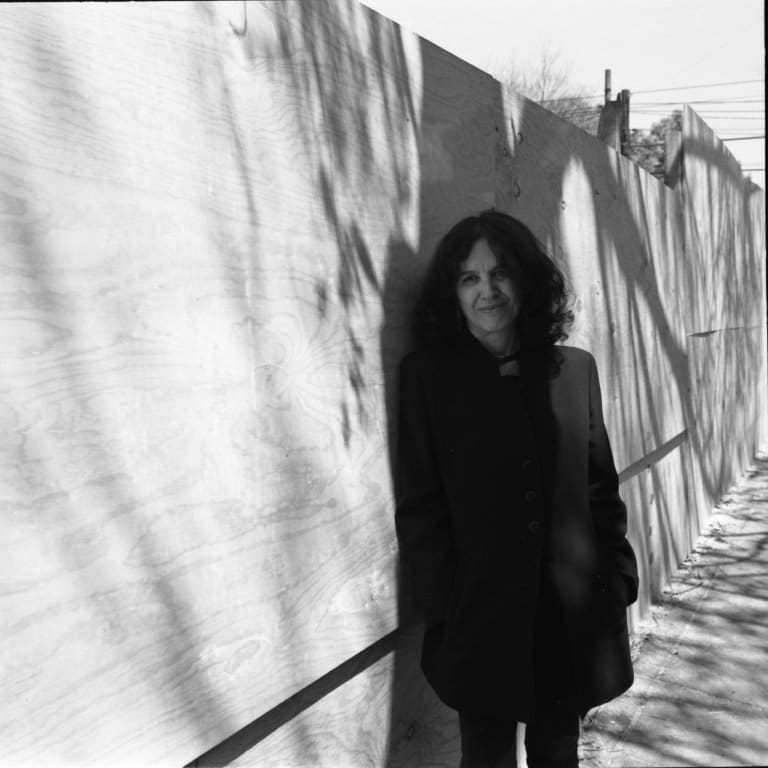Op 3 oktober gaat de opera Harriet van Hilda Paredes in première, gewijd aan de legendarische Afro-Amerikaanse vrijheidsstrijder Harriet Tubman (ca. 1822-1913). Halverwege de 19e eeuw ontsnapte zij aan een slavenbestaan, waarna ze met gevaar voor eigen leven vele lotgenoten bevrijdde via de zogenoemde Underground Railroad.
Na jarenlang getouwtrek besloot het Amerikaanse ministerie van Financiën in september 2018 de beeltenis van Tubman op een 20-dollarbiljet te plaatsen.
Harriet werd gecomponeerd in opdracht van Internacional Cervantino, Muziektheater Transparant en Muziekgebouw aan ’t IJ, waar ook de eerste uitvoering plaatsvindt. De charismatische sopraan Claron McFadden zingt de hoofdrol, de Vlaamse zangeres Naomi Beeldens vertolkt haar gesprekspartner Alice. Op 2 oktober spreek ik na afloop van een gratis toegankelijke openbare repetitie met de componist, regisseur Jean Lacornerie en dirigent Manoj Kamps.
Mexicaanse wortels
In Nederland is de Mexicaans-Britse Hilda Paredes (1957) weinig bekend. Hoewel ze sinds 1979 in Engeland woont, koestert ze nog altijd sterke banden met Zuid-Amerika. In 2001 kreeg ze de prestigieuze J.S. Guggenheim Fellowship voor haar opera El Palacio Imaginado. Deze is gebaseerd op een verhaal van de Chileense auteur Isabel Allende. Voor het libretto putte ze onder andere uit moderne Mexicaanse poëzie.
Zelf leerde ik Paredes in 2010 kennen tijdens een concert van het Arditti Quartet. Ik was onder de indruk van haar tweede strijkkwartet Cuerdas del destino, waarin de strijkinstrumenten fluisteren als menselijke stemmen. Maar wie is Hilda Paredes eigenlijk? Ter introductie stelde ik haar alvast drie vragen.
Ongebruikelijke speelwijzen
Wat typeert u als componist?
Ik vind veel inspiratie in het rijke culturele leven van mijn geboorteland Mexico. Vaak werk ik samen met Mexicaanse dichters en kunstenaars maar ik haak ook aan bij andere muzikale tradities. Zo word ik qua ritme en structuur geïnspireerd door de muziek van Noord-India. Ik vermijd het echter traditionele muziek te citeren of te imiteren. – Behalve als het onderwerp daarom vraagt, zoals in het geval van Harriet. Ik zet graag poëzie op muziek en adresseer in mijn opera’s psychologische, politieke, gender- en humanitaire kwesties.
De afgelopen vijftien jaar werk ik bovendien veel met elektronica. Dat heeft niet alleen mijn manier van luisteren maar ook mijn manier van componeren drastisch veranderd. Ik laat instrumenten graag anders klinken dan we gewend zijn, met behulp van alternatieve speelwijzen die ik zelf ontwikkel. Gelukkig zijn de meeste musici tegenwoordig vertrouwd met dergelijke ‘extended techniques’.

Gecodeerde berichten als simpele deuntjes
Wat kunnen we verwachten van uw opera ‘Harriet’?
Het is een portret van de Afro-Amerikaanse vrijheidsstrijder en voormalige slavin Harriet Tubman (ca. 1822-1913). Harriet vertelt haar levensverhaal aan haar jonge protegé Alice. In het eerste bedrijf horen we over haar jeugd als slavin en over een gewelddadige verwonding van haar hoofd. Ze kreeg hierdoor religieuze visioenen die haar uiteindelijk de weg naar ontsnapping wezen.
Ze werd bekend als de Mozes van haar volk, een leider die vele slaven bevrijdde. Hiertoe maakte zij gebruik van de Underground Railroad, een netwerk van antislavernijactivisten. Via smokkelroutes konden slaven van de zuidelijke naar de noordelijke staten van Amerika of naar Canada vluchten. Zoals de meeste van haar lotgenoten was Tubman analfabeet, daarom gebruikte ze muziek om weglopers de weg te wijzen. Gecodeerde berichten werden verpakt in simpele deuntjes, die je terughoort in het tweede bedrijf.
Blijvende strijd tegen racisme
Eenmaal zelfstandig nam ze een achtjarig, lichtgekleurd meisje in huis, Margaret. Het derde bedrijf gaat over de onbeantwoorde vraag of Margaret haar dochter was, omdat de twee een ongewoon sterke band hadden. Op haar oude dag vertelde Harriet vaak verhalen aan Margarets jongste dochter Alice.

De vierde akte beschrijft de gevechten die Harriet leidde tijdens de burgeroorlog. Ook vertelt ze over Nelson Davies, een jonge soldaat die haar tweede man werd. We leren haar gedachten kennen zoals die door verschillende bronnen zijn vastgelegd. Tot slot klinkt haar boodschap aan president Lincoln. De epiloog is een boodschap van hoop en continuïteit in haar strijd tegen slavernij en racisme.
Elektronica
Hoe heeft u het werk opgezet?
Harriet is een kameropera voor twee stemmen, slagwerk, viool, gitaar en elektronica. In eerste instantie zou het een monodrama worden, verteld door Harriet. Maar tijdens het onderzoek stuitten we op haar band met Alice, de jongste dochter van Margaret. In de nieuwe opzet vertelt Harriet haar relaas aan Alice vertelt, met wie ze ook in gesprek gaat. Daarom zijn er twee zangers.
Mayra Santos-Febres heeft prachtige gedichten gemaakt, gebaseerd op het leven van Harriet en goed gedocumenteerd. Lex Bohlmeijer schreef de meeste dialogen en maakte een verhaallijn. Omdat ik moest roeien met beperkte middelen heb ik naast zang en instrumenten ook elektronica ingezet. Zo kon ik toch een breed klankspectrum ontvouwen dat recht doet aan de dramatische ontwikkeling.
Hilda Paredes: Harriet: Scenes in the Life of Harriet Tubman
Muziektheater Transpararant
2 oktober 12.00-13.30 uur openbare repetitie Muziekgebouw aan ’t IJ Gratis toegankelijk op reservering Ik spreek met Hilda Paredes, regisseur Jean Lacornerie en dirigent Manoj Kamps
3 oktober 20.15 uur wereldpremière Muziekgebouw aan ‘t IJ. Info en kaarten hier. Inleiding 19.15-19.45 uur. Ik spreek met Hilda Paredes.
